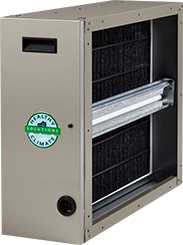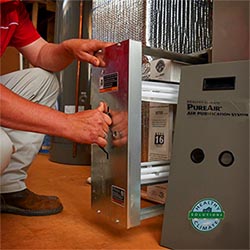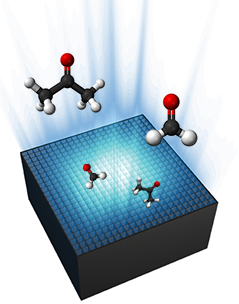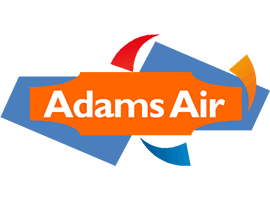- Prioritizing Air Purification
- Passive Air Purifiers
- Active Air Purifiers
- UV Germicidal Lighting Systems
- When Air Purification is Needed
$75 AC Tune-Up
Seasonal Special
- A $20 Value
- Must Present Coupon
- Not Valid With Other Offers
Prioritizing Houston Air Purification

Is cleaner and healthier air a concern in your home? As concerns about the effects of poor indoor air quality have increased, so has the need for quality whole home air purification. Our whole home air cleaning systems are becoming increasingly popular and can be incorporated into almost any existing air conditioning system. Whole home air purification virtually eliminates allergens, dust, pollen, mold spores, microbes, viruses, smoke, odors and other air borne pollutants floating around in the air in our homes as much as 100 times better than conventional return air filters. And, unlike portable air cleaners, our whole house air purifiers install along-side your current HVAC system and provide their air purifying benefits to every area of your entire home.
What's in your home's air?
Common Indoor Allergens and Pollutants

Indoor Air Pollution
| Agent | Pollution Type | Source | Health Risks |
|---|---|---|---|
| Dust | Particulates, Biologicals | Dust is a harmful indoor allergen composed of many particles including dust mites, chemicals, outdoor minerals, insect debris, skin flakes, animal dander, fungi and bacteria. | Dust can trigger allergies, symptoms including sneezing, coughing, and eye irritation. Dust is also known to trigger asthma flare ups. |
| Dust Mites | Particulates, Biologicals | Dust Mites thrive in warm, dark and humid environments and reproduce by the millions. They can hide in carpet, upholstry, mattresses, rugs, and drapery. | Dust mites are the primary cause of dust related allergens and although the Dust Mite itself is harmless against humans and animals, their waste and decomposing bodies contain a protein that triggers asthma flare ups and allergies and is one of the leading causes of indoor air pollution. |
| Pet Dander | Particulates, Biologicals | Pet Dander is composed of microscopic flecks of skin shed by cats, dogs, rodents, birds and other animals with fur or feathers. | Pet Dander and proteins found in saliva, urine and feces from cats, dogs and other pets can cause allergic reactions in some people and also asthma flare ups. |
| Pollen | Particulates | When conditions are right, plants start to pollinate. Changes in the seasons cause outdoor plants, trees, and grasses to produce pollen which is often brought indoors via open windows and doors, or by people, insects and animals. | Some forms of pollen are known to cause allergic reactions and asthma flare ups and even hay fever. Symptoms include itchy or watery eyes, caughing, sneezing, and trouble breathing. |
| Viruses, Bacteria, Mold, Fungi | Biologicals | Viruses, Mold, and Fungi are biological air pollutants often brought indoors by pets, humans, and insects where they often find perfect conditions to thrive and reproduce. Fungi and Mold thrive areas of high humidity or standing water and when conditions are right they reproduce by producing millions of tiny spores which can be circulated by air conditioning systems. | Biological agents such as viruses can cause numerous illnesses and infections, such as the common cold and the flu. Mold, Bacteria and Fungi also cause numerous respiratory ailments and illnesses and are known allergens that also cause asthma flare ups. |
| Tobacco Smoke | Gaseous Pollutants | Harmful chemicals are brought indoors due to many factors including smoking, the use of cleaning products, pesticides, and others like formaldehyde are released over time from building materials inside our homes such as carpets, drapery and other textiles. | Harmful chemicals are known to cause numerous respiratory ailments, cancers, headaches, sneezing, eye irritation, coughing, and other illnesses. |
Exploring the different types whole home air purifiers

Adams Air provides many different forms of technologies that all improve indoor air quality in different ways, but with so many different forms of indoor air quality improvements which solution is best for your home? Our active and passive whole home air purification systems combine one or many of the technologies listed below in order to provide the best indoor air quality improvements to your home depending on your concerns:
Air Purifier Technologies
| Air Cleaning Technology | Pollutant Addressed |
|---|---|
| Passive Air Filters | Particulates - Including small physical particles of Dust, Allergens, Smoke, Pollen, Pet Dander, Tobacco Smoke, Particles (not gasses) associated with Cooking Stoves and Fireplaces, Particles associated with organisms such as: Insect Debris and Dust Mite Waste, Mold Spores, Fungi Spores. |
| Passive Gas Phase Air Filters | Gaseous Pollutants - Including pollutants in a gaseous state such as Carbon Monoxide, Nitrogen Dioxide, Sulfur Dioxide that come from combustion processes - Sources include: Stoves, Space Heaters, Furnaces, Fireplaces, Tobacco Smoke, Improperly Vented Appliances. Other sources include VOCs (Volatile Organic Compounds) such as Formaldehyde, Benzene, Perchloroethylene that slowly evaporate at room temperature and over time these toxic gasses build up in our homes from sources such as: Building Materials, Textiles, Furnishings, Drapery, Adhesives, Paints, Varnishes, Cleaning Products and Pesticides. |
| Ultra-Violet Lighting Systems | Air Borne Biologicals and Microbials - Including Air Borne Viruses, Molds, Bacterias, and Other Air Borne Organisms. |
| Photocatalytic Oxidation Cleaners | Gaseous Pollutants - Including pollutants in a gaseous state such as Carbon Monoxide, Nitrogen Dioxide, Sulfur Dioxide that come from combustion processes - Sources include: Stoves, Space Heaters, Furnaces, Fireplaces, Tobacco Smoke, Improperly Vented Appliances. Other sources include VOCs (Volatile Organic Compounds) such as Formaldehyde, Benzene, Perchloroethylene that slowly evaporate at room temperature and over time these toxic gasses build up in our homes from sources such as: Building Materials, Textiles, Furnishings, Drapery, Adhesives, Paints, Varnishes, Cleaning Products and Pesticides. |
| Ionizers / Active Ozone Generators | Particulates, Gaseous Pollutants, Biologicals |
So have you been holding your breath for cleaner and healthier air? We always like to remind our clients that whole home indoor air purifiers are not meant as the absolute single solution to improved indoor air quality - Without properly ventilating a home with fresh air and oxygen from the outdoors, indoor air pollution begins to build up and accumulate inside our homes only for us to breathe and this is why the EPA recommeneds first and foremost to ventilate our homes with fresh outdoor air as the best way to improve our indoor air quality - Outdoor air is much cleaner than indoor air so the best way to improve indoor air quality is to install a whole home ventilation system that allows your current air conditioning system to automatically make fresh air exchanges with the outdoor air and expel accumulated indoor air pollution. However, bringing outdoor air into our homes can be a problem for some people by introducing outdoor allergens, pollens, bacteria, dust and other particulates into our home's air which can trigger asthma flare-ups and can also cause allergic reactions in those who are sensitive to these issues, so if allergies or asthma is a concern in your home then a whole home air purifier, which filters the air in your home, is the next best option. For more information on the different types of air purifiers we offer at Adams Air and how they work, including: Active Air Purifiers, Passive Air Purifiers, HEPA Filtration Systems and UV Lighting Systems, select from the tabs listed at the top of this section which best suit your indoor air purification concerns.
Passive Air Purifiers

Have you been holding your breathe for cleanier and healthier air? Are allergies, asthma, or other respiratory problems a concern for you or someone in your home? If your concerned about controlling and removing all the different sources and forms of indoor air pollution in your home, then a Whole Home Passive Air Purifier may be the solution. Our whole home passive air purification systems combine many different forms of air purification technologies in order to provide the ultimate indoor air quality improvement and remove all the different types of indoor air pollution including: Particulates, Biological Pollutants, and Gaseous Pollutants.
Passive Air Purifiers and Indoor Air Pollution
| Pollutant Addressed | Pollutant Information |
|---|---|

Particulate Matter |
Particulate Matter - Including small physical particles of various sizes known to cause allergic reactions and respiratory ailments and are composed of Dust, Dirt, Allergens, Smoke, Pollen, Pet Dander, Tobacco Smoke.
Particles associated with Cooking Stoves, Candles, Fireplaces, Chimneys. Particles associated with organisms such as: Insect Debris and Dust Mite Waste, Mold Spores, Fungal Spores and Endotoxins from Bacteria. |

Biological Pollutants |
Biologicals Pollutants - Includes air borne organisms that cause illnesses, allergic reactions, respiratory ailments and infections such as: Viruses, Mold, Fungi, Bacteria, and other air borne biological contaminents including proteins found in dried mouse urine, insect droppings, cat and dog saliva. |

Gasseous Pollutants |
Gaseous Pollutants - Including pollutants in a gaseous state such as Odors, Carbon Monoxide, Nitrogen Dioxide, Sulfur Dioxide that come from combustion processes - Sources include: Stoves, Space Heaters, Furnaces, Fireplaces, Tobacco Smoke, Improperly Vented Appliances. Other sources include VOCs (Volatile Organic Compounds) such as Formaldehyde, Benzene, Perchloroethylene that slowly evaporate at room temperature and over time these toxic gasses build up in our homes from sources such as: Building Materials, Textiles, Furnishings, Drapery, Adhesives, Paints, Varnishes, Cleaning Products and Pesticides. |

Passive Whole Home Air Purification systems include air purifiers that are installed along-side your existing HVAC system's ductwork and are electronically wired into your air conditioning system. Our Passive Whole Home Air Purification Systems utilize a series of air purifying options including: high MERV rated air filters, activated charcoal filters, germicidal UV lights, photocatalyitic oxidation cleaners, as well as electrically charged rails and grids in order to attract, trap and remove indoor air pollutants such as: Dust, Pollen, Allergens, Smoke, Odors, Mold Spores, Fungi Spores, Pet Dander, Air Borne Germs and Viruses, and Chemical Vapors as they are pulled through your air conditioning system and are among the best whole home air purification options.
Active Air Purifiers

Active Air Purifiers, unlike Passive Air Purifiers, utilize either Photocatalytic Oxidation technologies or air Ionizing technologies to release molecules of hydrogen and oxygen (PCO) or negatively charged air ions (Ionization) directly into the air stream of your central air conditioning system which actively float around your home and seek out contaminants at their source - Purifying both the air and surfaces of your home 24 hours a day. Active Air Purifiers, unlike passive air purifiers, operate regardless of whether or not your air conditioning system's fan is running and don't require your air conditioning system to pull or push contaminated air through any filters like you see with passive filtration systems. Active air purifiers are capable of purifying every cubic inch of air that your air conditioning system reaches as well as surfaces such as kitchen or bathroom counters and are effective against all 3 categories of indoor air pollution, including: Particulates, Biological Contaminants, and Gaseous Pollutants.

Particulates

Biologicals

Gasses
How does it work?

Active Air Purifiers make use of the process of Photocatalytic Oxidation (PCO) and Ionization in order to purify the air and surfaces the air is exposed to - Active Air Purifiers that utilize the PCO process consist of a germicidal UV light that reflects off the surface of titanium dioxide creating electrons which react with the moisture in the air (H2O) breaking it down into tiny hydroxyl radicals (OH-). These small and agile molecules then actively float through the air and seek to bond to bigger carbon based pollutants (Biological Pollutants and Gaseous Pollutants), breaking them apart and forming harmless molecules of carbon dioxide and oxygen, in turn purifying the air and surfaces these hydroxyl radicals are exposed to.
The Ionization process within an active air purification unit uses a charged electrical surface to produce electrically charged air ions. These negatively charged ions then actively seek out and bond to the positively charged particles such as allergens, dust, pollen and dander floating in the air (Particulate Matter). The particles continue to bond to each other until they are heavy enough to drop out of the air and collect in your systems return air filters.
Ultra Violet Lighting Systems

Ultra Violet Lighting Systems are powerful germicidal lamps that are installed inside your existing central air conditioning system near typically near the system's evaporator coil or throughout the system's ductwork. UV Lighting Systems utilize powerful ultra-violet radiation to provide sterilizing benefits to both the air and the surfaces they shine on, including the evaporator coil itself and the surrounding ductwork, and are designed to combat only 1 type of indoor air pollution: Biological Contaminants.
UV Lighting
| Pollutant Addressed | Pollutant Information |
|---|---|

|
Biologicals Pollutants - Includes air borne organisms that cause illnesses, allergic reactions, respiratory ailments and infections such as: Viruses, Mold, Fungi, Bacteria, and other air borne biological contaminents including proteins found in dried mouse urine, insect droppings, cat and dog saliva. |

UV Lighting Systems are often found in medical facilities around the world in order to prevent the spread of viruses and the growth of bacteria within ductwork and on an air conditioning system's evaporator coil. The Evaporator Coil is a vital component of every air conditioning system and it's purpose is to remove the heat from the air that passes through it, in turn providing cool, comfortable, and crisp air within our homes and offices. Consequently, the evaporator coil gets very cold and moist as it operates to cool down our homes and as it removes moisture from the air - This in turn leads to the growth of mold, bacteria, and fungi within the coil itself and the surrounding ductwork. The moisture on the coil also often traps dust and debris from the air that passes through it and combined with the growth of biological contaminants such as bacteria and fungi, the coil can become a clogged breeding ground for viruses, allergens, mold spores, and fungal spores - Producing illnesses and odors, and when a coil becomes clogged with such debris it eventually fails to operate and has to be cleaned by a professional - UV lighting systems combat all these issues and provide healthier and cleaner indoor air quality benefits to any existing HVAC system:
An Evaporator Coil With and Without UV Lighting
| Without UV Lighting | With UV Lighting |
|---|---|

|

|
Turn to the Houston Air Purification Experts
Send us an Email
 Air Purification
Air Purification
From Dust, Pollen, Odors and Chemicals, to Mold and Air Borne Viruses such as the Flu - Our whole home air purification systems filter out indoor air pollution and provide the healthy and clean air you and your home deserve.
Read More Humidity Control
Humidity Control
Houston's climate may be humid and sticky, but it doesn't mean your home has to be - Our whole home dehumidifier systems work to keep the air in your home crisp and comfortable while reducing mold, fungi, and insect growth.
Read More Ventilation
Ventilation
Our Home Ventilation Systems automatically ventilate stale and polluted indoor air to the outside environment and bring fresh, oxygen rich outdoor air in our homes in order to reduce the accumulation of indoor air pollution.
Read More Ductwork
Ductwork
Air Flow is the most important aspect of an HVAC system, and often the most over-looked. From Ductwork modifications and repairs, to complete re-works and installations - Adams Air is Houston's Premier Ductwork Specialist.
Read More
